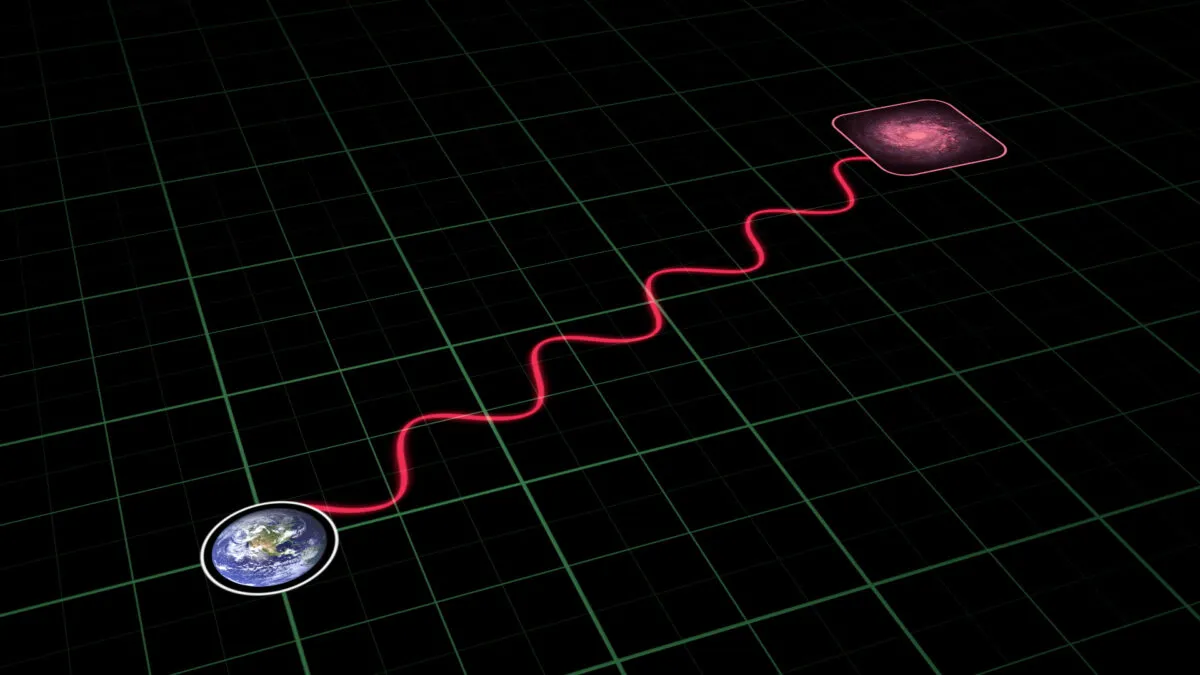What's the most distant object you can see with a telescope? This isn't something we usually hear asked from day-to-day.
A favourite question of quizmasters, of course, is “What’s the furthest object that you can see with the naked eye?”.
The answer invariably given is the Andromeda Galaxy, M31, which – at 2.5 million lightyears away – is impressively distant.
Find out how to see the Andromeda Galaxy through your telescope

However, as with many things in astronomy, there are instances where this might be beaten. Under very dark skies, the Triangulum Galaxy, M33, may be seen.
Its distance is less certain, quoted as 2.4–3.1 million lightyears, but at the latter value it would easily beat M31.
There have even been claims that the galaxies M81 and M82, known as Bode's Galaxy and the Cigar Galaxy, in Ursa Major have been seen from exceptional sites at high altitude.
At a distance of 11.7 million lightyears, these would be hard to beat.
Most distant object with a telescope

So what's the most distant object you can see with a telescope?
Here things get much more complex, as different sizes of telescope have different light-grasp capabilities.
Combined with variable sky conditions, looking for distant targets can produce markedly different results.
One of the best targets for this kind of exercise is an object known as a quasar.
A quasar is a distant star-like object, the name quasar being a contraction of ‘quasi-stellar’, meaning ‘star-like’.
They are believed to be extremely luminous active galactic nuclei, possibly powered by a supermassive black hole.
Most are pretty faint, but there are a number which are within the visual range of amateur telescopes.

A classic example visible in springtime is 3C 273, located in Virgo.
This is one of the first quasars identified as such and shines away at mag. +12.9.
If you manage to locate it, the light from this object set off 2.4 billion years ago – roughly half the age of our Sun.
Use our finder charts above and below and see if you can find 3C 273 visually.

If you'd like to do more quasar hunting, we would recommend taking a look at the Catalogue of Bright Quasars and BL Lacertae Objects.
This resource lists many other objects as well as quasars. The quasars are identified in the table by the abbreviation QSO.
Calculating distance using redshift

Distances are listed in terms of redshift (z). This value is a way of determining an object's distance at cosmological scales.
Redshift indicates how much an object’s spectrum has been shifted towards the red end of the spectrum, a consequence of the speed it is moving away from us.
Redshift is given as v÷c where v is the velocity (km/s) and c the speed of light (299,792km/s).
Once you have worked out redshift, you can work out the distance of the object in megaparsecs (Mpc) using the formula v÷H0, where H0 is the Hubble Constant (the unit of measurement for describing the expansion of the Universe).
A precise value for the Hubble Constant hasn't been settled on, but a value of 67km/s/Mpc can be assumed.
Rearranging these formulae allows us to determine distance from redshift as zc÷H0.
Have you managed to observe 3C 273 or any other quasars? Let us know by emailing contactus@skyatnightmagazine.com
This guide appeared in the April 2019 issue of BBC Sky at Night Magazine.

